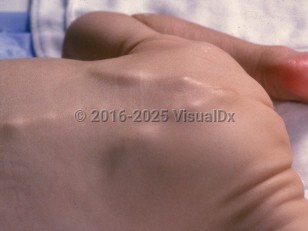Per the Children's Bureau, a national estimate of 1820 children died from abuse and neglect in 2021 at a rate of 2.46 per 100 000 children in the population. Younger children are the most vulnerable to death as the result of child abuse and neglect. Data show that in 2021, 66.2% of child fatalities were younger than 3 years and close to one-half (45.6%) of child fatalities were younger than 1 year.
Neglect is defined by the intentional failure of a caregiver to provide for the basic needs of a child. This includes inattention to a child's nutrition, clothing, shelter, medical care, safety, and education. Failure or refusal to provide these necessities endangers the child's physical health in addition to psychological growth and development. It is important to note that while poverty is a risk factor for neglect, being poor is not neglect, ie, there is a distinction between a caregiver's inability to provide needed care secondary to financial limitations versus the caregiver's refusal to provide care.
Characteristics indicative of child neglect include poor hygiene, poor weight gain, inadequate medical care, and frequent absences from school.
Population risk factors that have been identified to increase the potential for abuse may include young parents, children with special health care needs or developmental disorders, substance use or mental health issues in the home, and poverty.*
*Note: Risk factors are population risk factors and should never be relied on to decide who to further evaluate, who to report, when to worry about abuse, etc. Doing so may result in misdiagnosis and delay to diagnosis. The facts of the specific case are far more important than profiling who is at risk.
Neglect can be divided into the following categories: physical, educational, emotional, and medical.
Physical Neglect
Injury to a child can occur by acts of omission such as willfully failing to provide resources, eg, supervision, food, clothes, or shelter; unintentionally failing to provide resources due to caregiver mental health issues or substance use; or not recognizing dangerous situations leading to, eg, unsupervised drowning, hyperthermia, drug ingestions, or unsafe sleep.
Physical neglect is the most common type of abuse and may present with cutaneous manifestations. Lack of access to basic necessities, inadequate supervision, and poor emotional support can severely impact the child's development. Physical neglect may result in failure to thrive, malnutrition, illness, or even physical injury including lacerations, bruises, and burns.
Educational Neglect
Educational neglect refers to the failure of a caregiver to enroll a child in school or provide the appropriate educational training. This increases the child's risk of poor intellectual and emotional development and can lead to poor self-image and destructive behavior.
Emotional Neglect / Psychological Abuse
Emotional and psychological neglect can range from withholding affection and ridiculing to engaging in extreme interpersonal violence between adults in a child's presence. It is often the most difficult situation to substantiate in a legal context. Symptoms in children include poor school performance, eating disorders, sleep disorders, vague physical complaints, and emotional disturbance. Specific parental behaviors considered to be emotional maltreatment include the following:
- Ignoring
- Rejecting
- Verbally assaulting
- Isolating the child from normal social contacts
- Terrorizing with extreme forms of punishment
- Corrupting or exploiting
Medical neglect refers to the failure to provide appropriate health care to a child, therefore placing the child at risk for death or permanent disability or disfigurement. Suspicion for medical neglect increases when a caregiver ignores medical recommendations for a child with a treatable disease or refuses medical care in an emergency. Parents may refuse certain medical care because of religious beliefs, anxiety, or financial issues. Child Protective Services (CPS) intervenes when the child has an acute medical emergency, a life-threatening disease not being treated, or a disease that may result in chronic disability if not treated.
Related topic: physical child abuse



